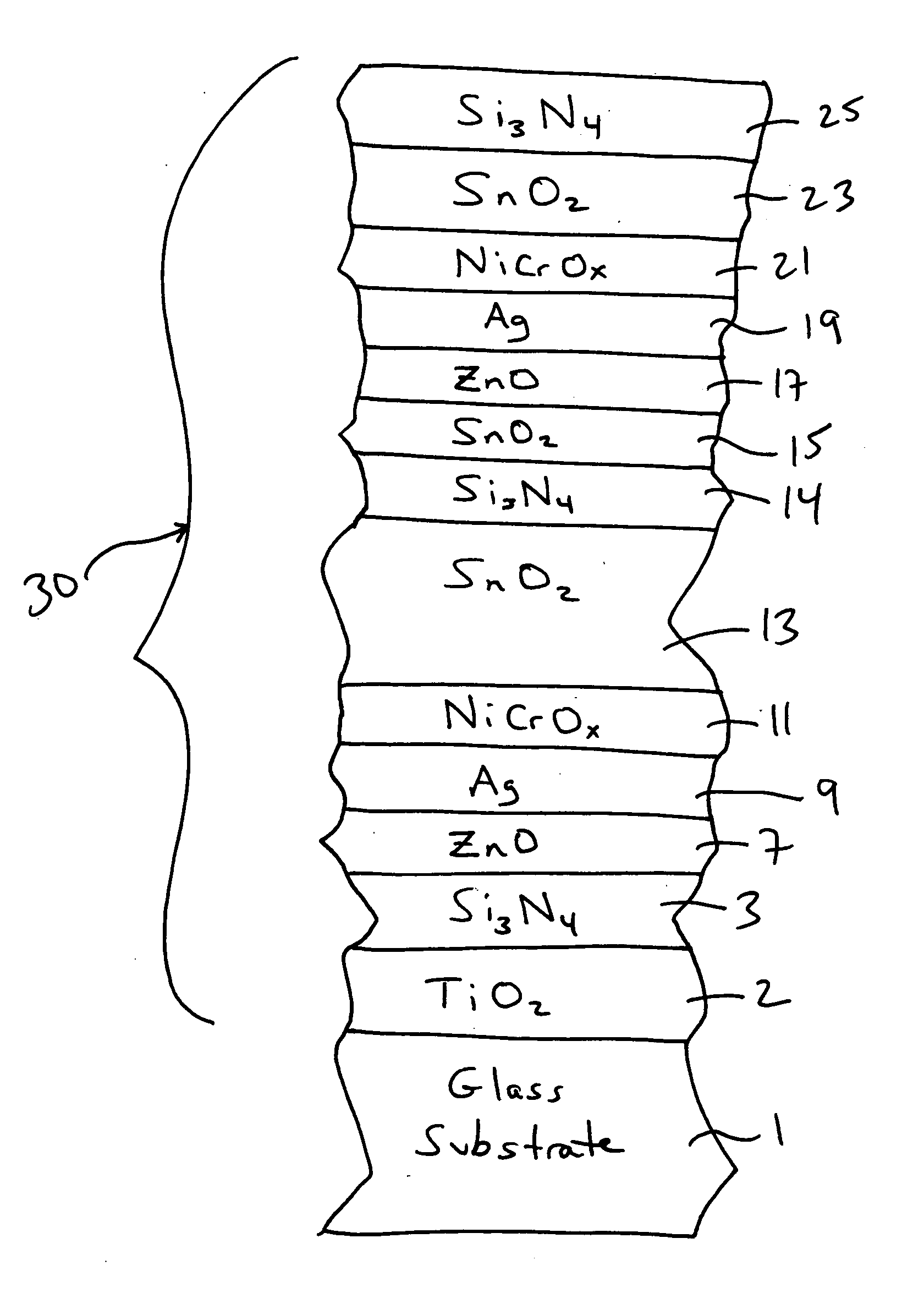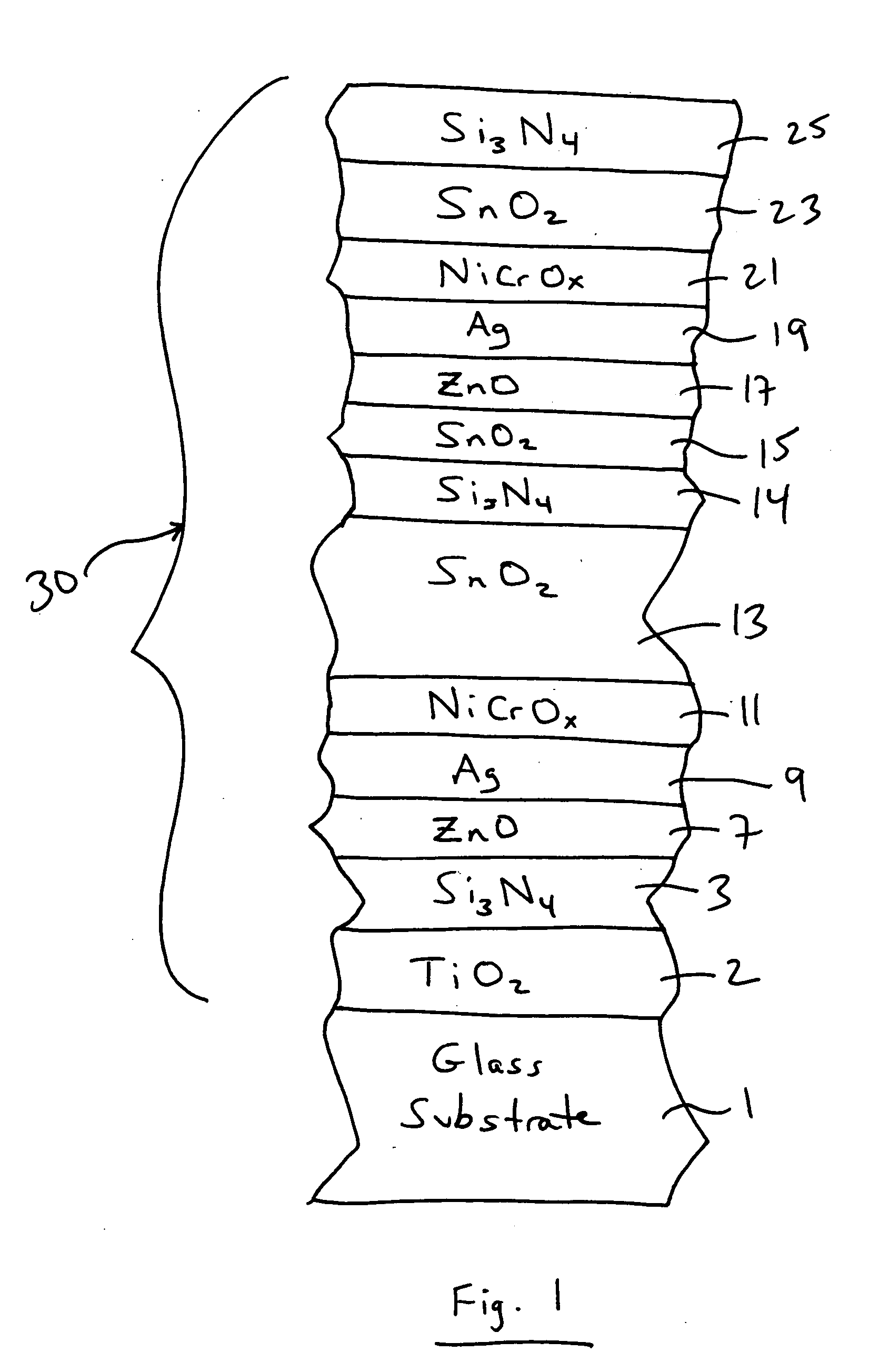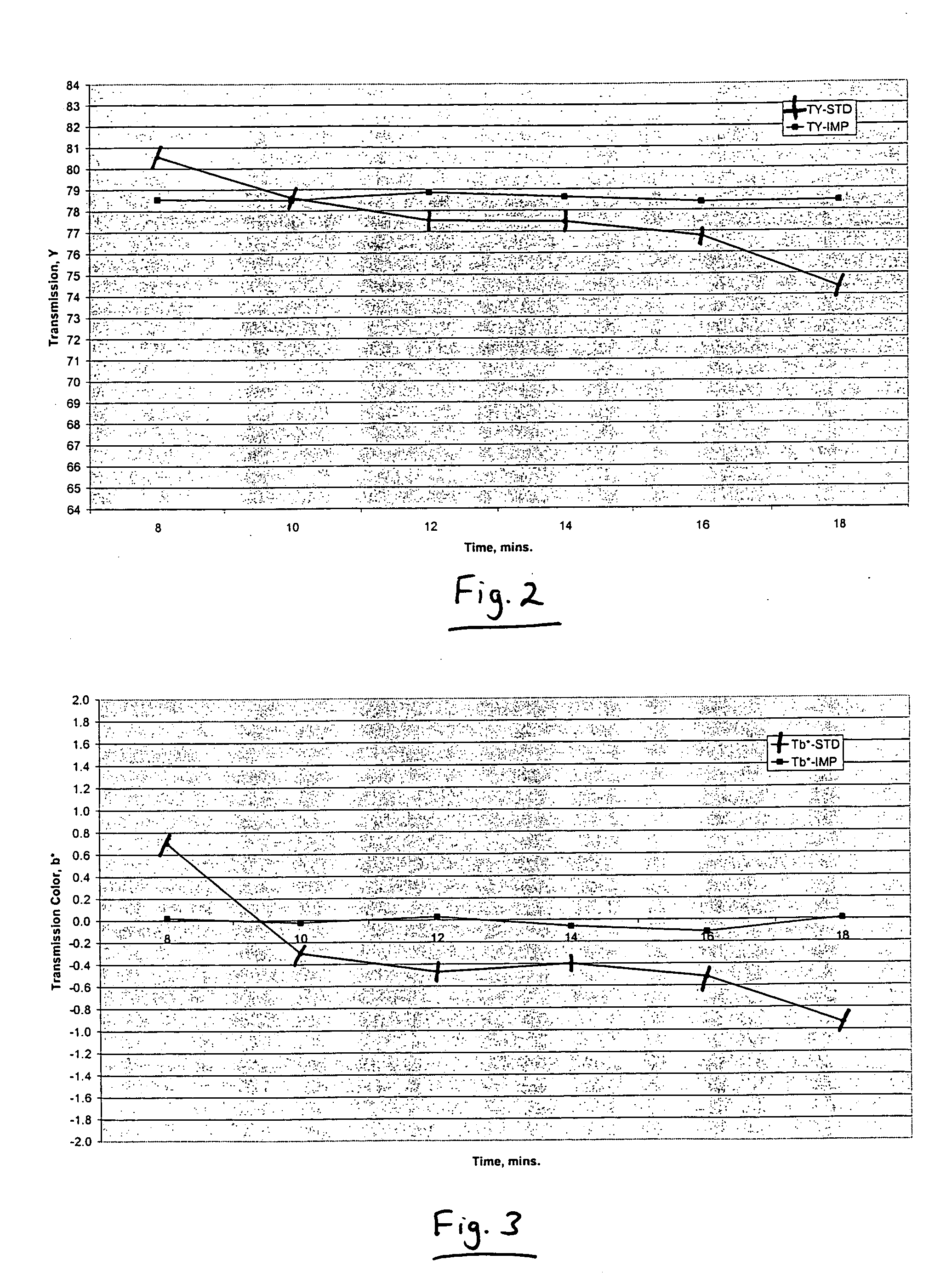Coated article with low-E coating including tin oxide interlayer
a technology of tin oxide and coating article, which is applied in the direction of natural mineral layered products, water-setting substance layered products, transportation and packaging, etc., can solve the problems of coating breakdown, significant drops in visible transmission of coated articles, and one or more of the above-mentioned desirable characteristics to significantly deteriorate in an undesirable manner, so as to improve thermal stability, mechanical durability, and less visible transmission shift
- Summary
- Abstract
- Description
- Claims
- Application Information
AI Technical Summary
Benefits of technology
Problems solved by technology
Method used
Image
Examples
examples
[0049] The following Examples were made via sputtering on 6 mm thick clear glass substrates so as to have approximately the layer stacks set forth below. Example 1 is according to an example embodiment of this invention as shown in FIG. 1, whereas the Comparative Example is provided for purposes of comparison. The thicknesses are in units of angstroms (Å) and are approximations.
LayerGlass SubstrateComparative ExampleExample 1TiO233.133.1Si3N4110110ZnO100100Ag107107NiCrOx36.518.3SnO2482.7382.7Si3N4110110SnO20100ZnO100100Ag159.5159.5NiCrOx36.536.5SnO2100100Si3N4193.4193.4
[0050] It can be seen from the above that Example 1 and the Comparative Example are similar, except the tin oxide interlayer 15 is provided in Example 1 but is not in the Comparative Example. After being sputter deposited onto the glass substrates, the Example coated articles were heat treated in a manner sufficient for tempering.
[0051]FIGS. 2-5 compare Example 1 (IMP) to the Comparative Example (STD) with regard t...
PUM
| Property | Measurement | Unit |
|---|---|---|
| sheet resistance | aaaaa | aaaaa |
| sheet resistance | aaaaa | aaaaa |
| sheet resistance | aaaaa | aaaaa |
Abstract
Description
Claims
Application Information
 Login to View More
Login to View More - R&D
- Intellectual Property
- Life Sciences
- Materials
- Tech Scout
- Unparalleled Data Quality
- Higher Quality Content
- 60% Fewer Hallucinations
Browse by: Latest US Patents, China's latest patents, Technical Efficacy Thesaurus, Application Domain, Technology Topic, Popular Technical Reports.
© 2025 PatSnap. All rights reserved.Legal|Privacy policy|Modern Slavery Act Transparency Statement|Sitemap|About US| Contact US: help@patsnap.com



